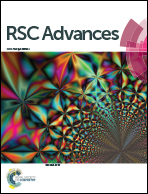Enhanced enzymatic hydrolysis of lignocellulose by integrated decrystallization and fed-batch operation
Abstract
High solids enzymatic hydrolysis is a promising process to increase the concentrations of fermentable sugars for ethanol production. Here, we reported an integrated strategy incorporating decrystallization and fed-batch operation to enhance the enzymatic hydrolysis of lignocellulose at high solid loadings. The effect of concentration of phosphoric acid on the decrystallization and enzymatic hydrolysis of cellulose was investigated. The results showed that 86 wt% phosphoric acid could completely break the crystalline structure, achieving a high cellulose conversion and hydrolysis rate (89% within 4 h) in batch operation (5% solid loading). In the fed-batch operation, we designed two different enzyme feeding strategies, in which the enzymes were added either at start-up or along with the fresh substrate. The results indicated that fed-batch hydrolysis can be carried out at a final high solids loading of 30%, resulting in a glucose concentration as high as 143.5 g L−1 within 27 hours. Meanwhile, a stable and high cellulose conversion was achieved in fed-batch operation with the enzymes divided over the substrate feed, which should be dependent on the decrystallization of the substrate. Our findings provide a practical way to enhance enzymatic hydrolysis at high solid loadings and also propose a feasible enzyme feeding strategy in fed-batch operation.


 Please wait while we load your content...
Please wait while we load your content...